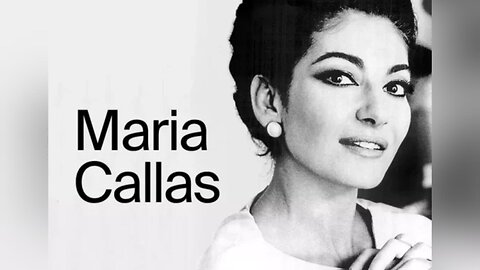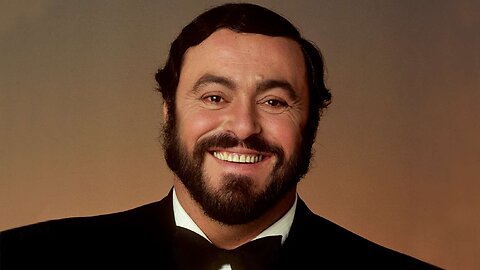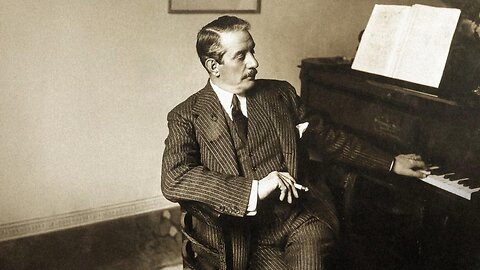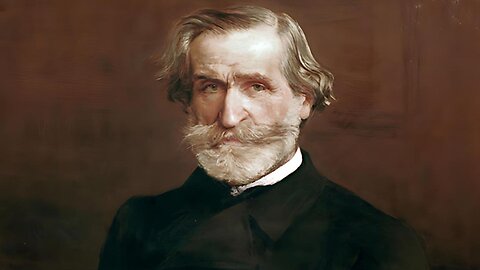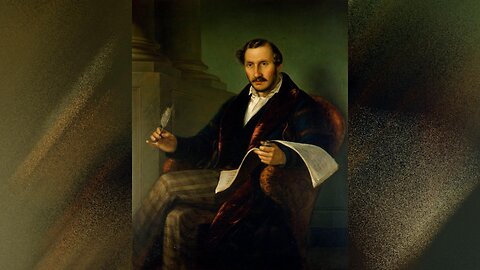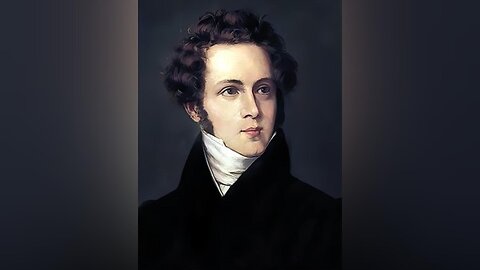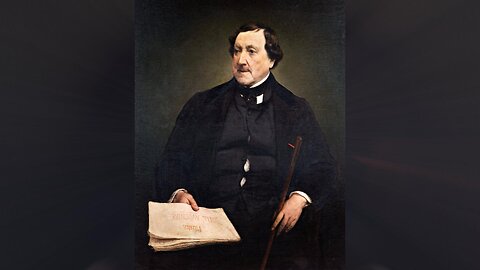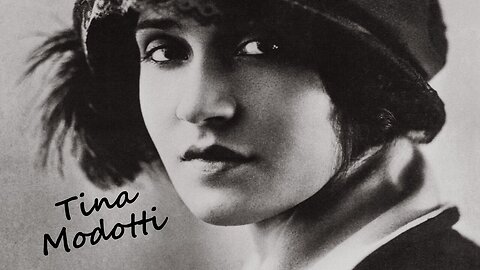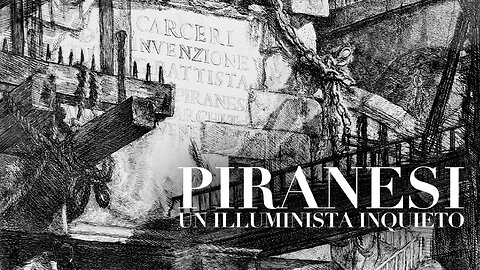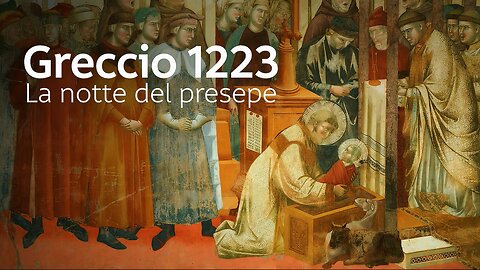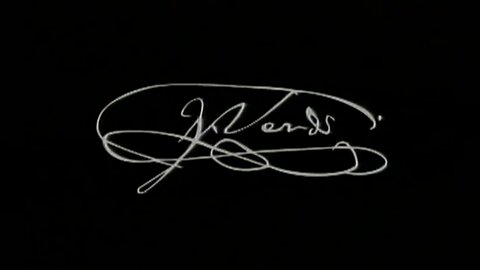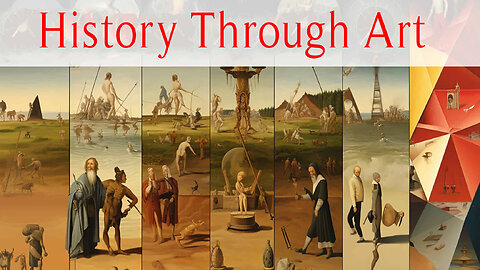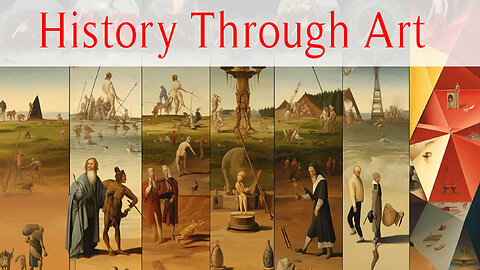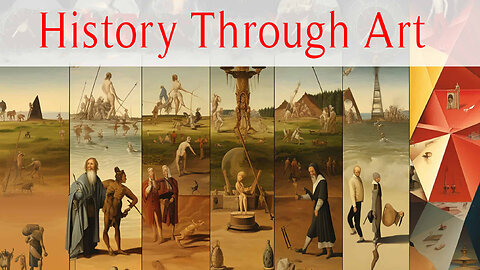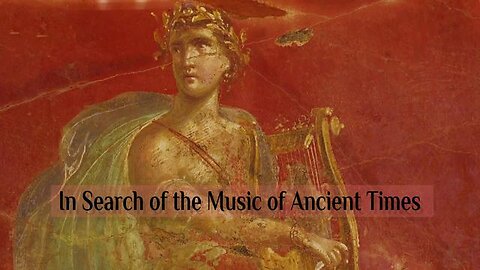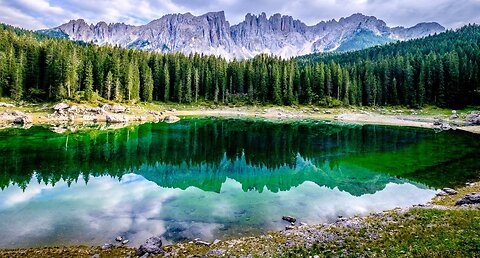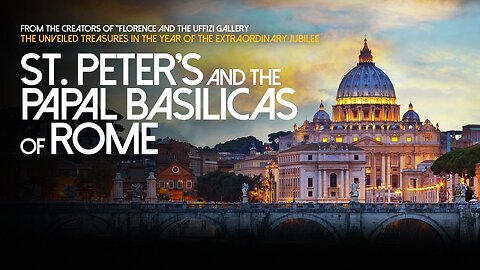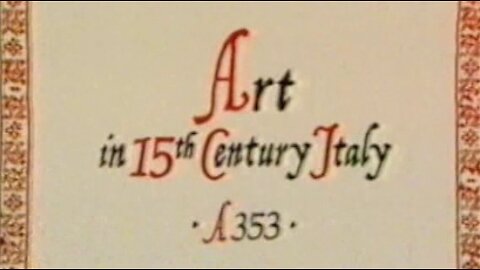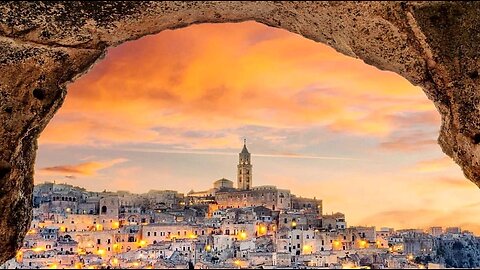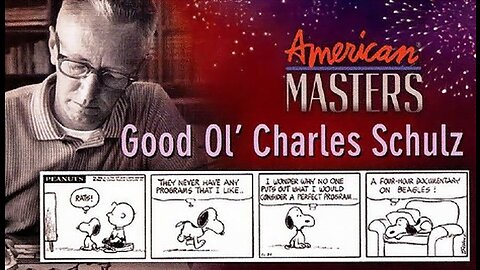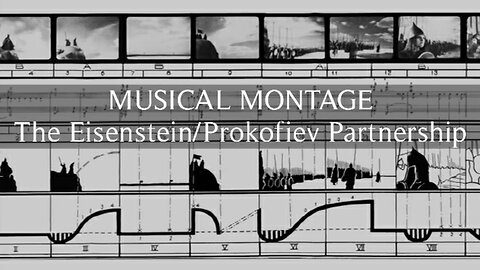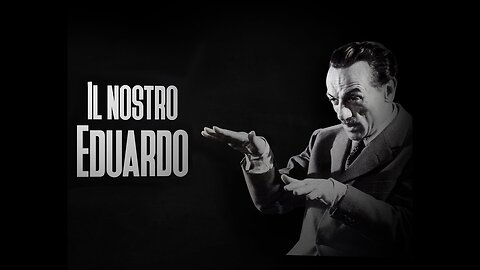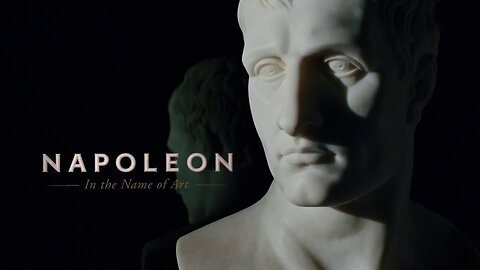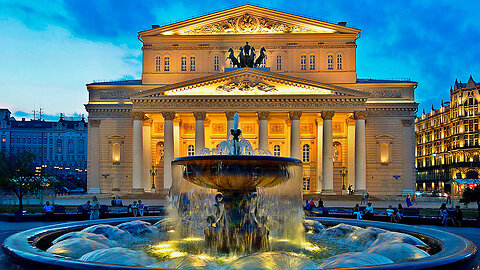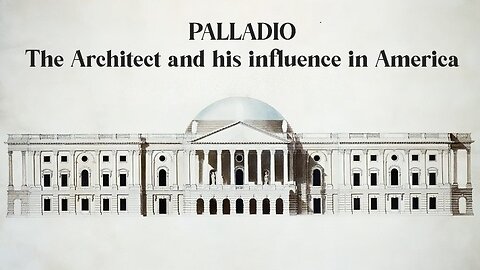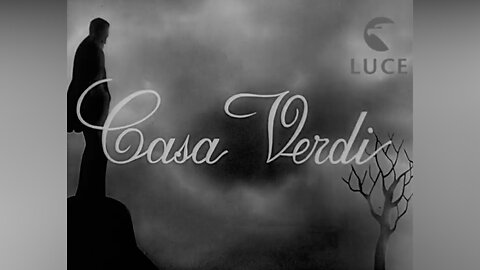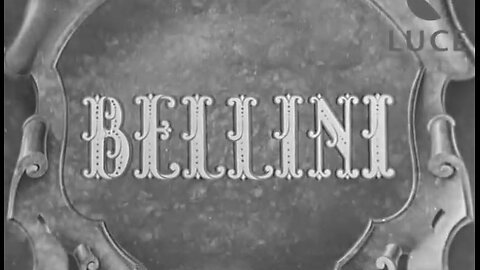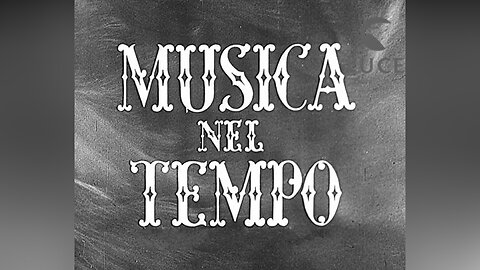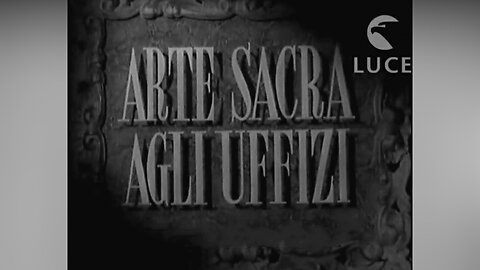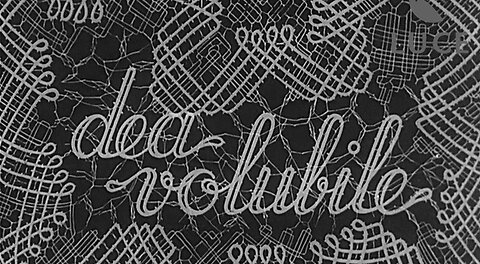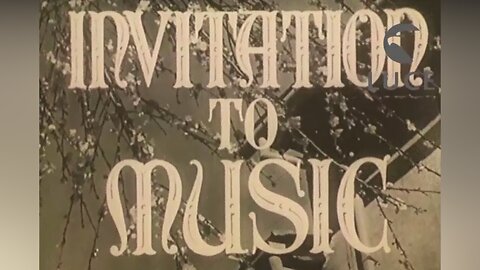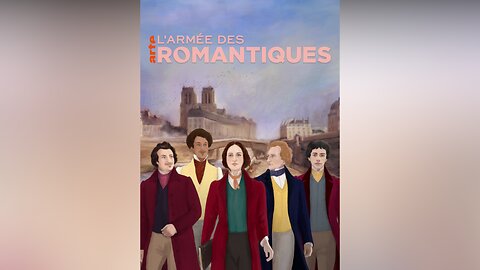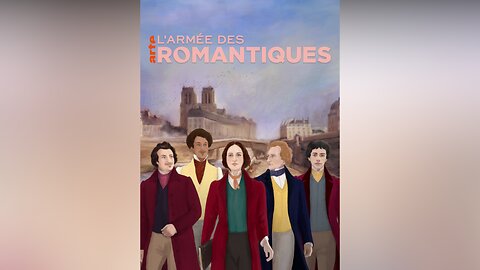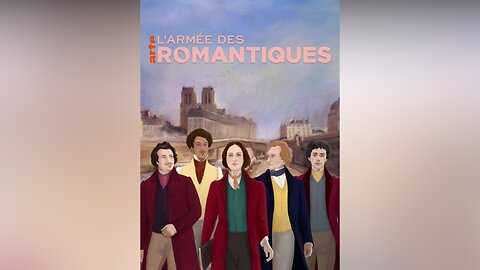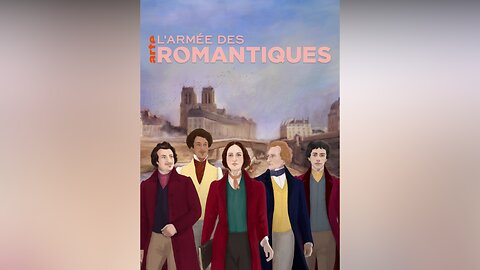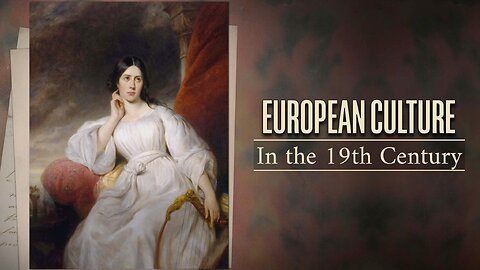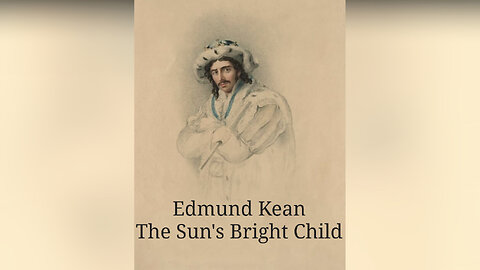Premium Only Content
This video is only available to Rumble Premium subscribers. Subscribe to
enjoy exclusive content and ad-free viewing.
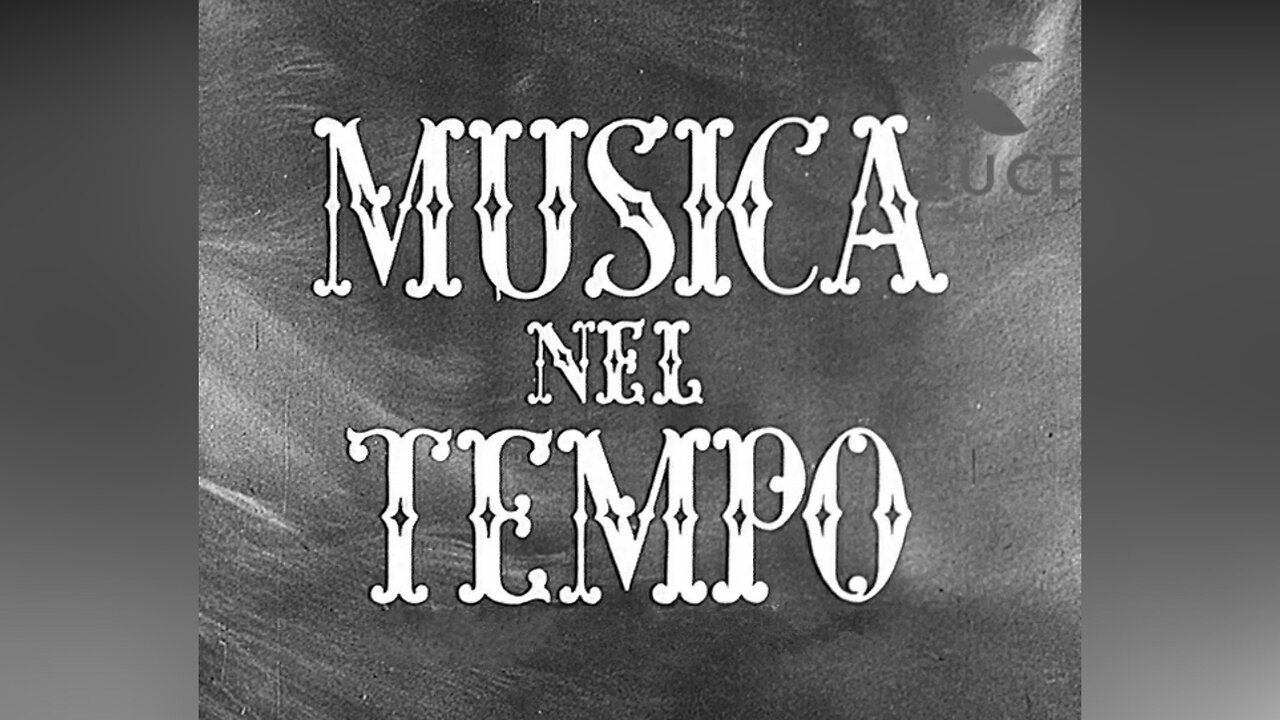
Arts Documentaries (Various)
AdanethArts
- 36 / 46
1
La Storia siamo Noi: Maria Callas (ENG SUB)
Adaneth - Arts & Literature
Maria Callas, pseudonym of Maria Anna Cecilia Sofia Kalogeropoulou (New York, December 2, 1923 – Paris, September 16, 1977), was an American soprano of Greek origin, naturalized Italian and later Greek.
Gifted with a voice with a homogeneous timbre and great volume, Maria Callas developed masterful control of it as well as remarkable range and agility, thanks to the bel canto training she received from soprano Elvira de Hidalgo. Combined with her great musicality and dramatic nature, this strong technical background enabled her to spearhead the rediscovery of the Italian repertoire of the first half of the 19th century, alongside conductors Tullio Serafin, Antonino Votto, and Nicola Rescigno, particularly Vincenzo Bellini and Gaetano Donizetti. Following the historic revivals of roles written for Maria Malibran and Giuditta Pasta, critics reintroduced the term "dramatic soprano d'agilità."
Callas was a dramatic soprano, but through study she developed a great coloratura and range, rediscovering the possibilities of the dramatic soprano in the era of Bellini and Donizetti. Thus, Eugenio Gara coined the term "dramatic soprano d'agilità" specifically for her, a vocal category that included the 19th-century prima donnas Maria Malibran and Giuditta Pasta: these were high mezzo-sopranos in the Rossinian mold who, through assiduous practice, had extended their range to the highest notes to embody, in addition to the usual travesti characters, passionate and romantic soprano heroines such as Norma, Amina, and Lucia, without, however, losing the fullness of their low notes, which were suited to conveying their dramatic side. In reality, we have very different accounts of Callas's early vocal training, and in her, the lower notes are more artificial and constructed than the truly soprano ones, which were often approached with enthusiasm: the fact remains that Callas put herself, from the beginning of her career, in the condition to perform with full voice, and without mystification, the roles for which the most gifted sopranos of the early nineteenth century had become legendary.
What, at times, could make Callas seem like a mezzo-soprano was instead the natural dark color and the breadth of her sound, which, especially at the beginning of her career and at a very young age, allowed her to tackle authentically dramatic soprano parts: Abigaille, Leonora in Fidelio, Tosca, Turandot, Brunilde, Isolde. Beyond her natural characteristics, no singer other than her has managed to achieve such musically expressive results using classical operatic singing, based on correct and constant breath support, diaphragmatic support, and the consequent masking of sounds across the entire range, from the lowest to the highest. However, during the years of her greatest vocal and artistic splendor, up until her separation from her husband, these sounds were always subordinated to expressiveness, never an end in themselves: that is, they were used according to the meaning of the words and the moment of the sentence.
Unique was Callas's obstinacy and will to apply, in a maniacal and stressful way for the performer, the bel canto method of Baroque origin—in a word, "classical"—to the entire proto-Romantic, Verdian and verismo world, thus sculpting, in a short parabola, vocal characters that today are very difficult, if not impossible, to forget. Callas's art, however, was even more complex than just her vocal work, equally involving the scenic aspect of the parts she performed, achieving a completely unprecedented synthesis between singing and dramatic art. Hers was a complete restoration of the concept of "bel canto," encompassing everything from voice to phrasing, from acting to posture, from makeup to even hair. She was the first opera singer to interest leading film and theater directors in opera; Aside from the experiments with the Maggio Musicale Fiorentino (Rossini's Armida, with sets by Alberto Savinio and choreography by Léonide Massine, 1952), her collaborations with Luchino Visconti (who considered her the greatest living actress) at La Scala for La Vestale, La sonnambula, and La traviata (1954–1955 season, with revivals in 1956 and 1957), Anna Bolena and Ifigenia in Tauride (1956–1957 season, with revival in 1958), and subsequent collaborations with Franco Zeffirelli, Margherita Wallmann, and Alexis Minotis were of historic importance.
Her performances brought melodrama back to its golden age, but above all they reinstated it rightfully among the highest artistic expressions, making it almost a contemporary genre, capable of incessantly renewing itself and attracting a much younger audience to the theatres, as well as providing inspiration for highly complex critical and aesthetic analyses. Her artistic success and subsequent media exposure due to her extra-theatrical social interactions have built a myth around her figure, attributing her the title "Divina" (Divine).
2
La Storia siamo Noi: Luciano Pavarotti (ENG SUB)
Adaneth - Arts & Literature
Luciano Pavarotti (Modena, 12 October 1935 – Modena, 6 September 2007) was an Italian tenor. Gifted with a voice that is ringing in the high notes and rich in the middle, with clear phrasing and a limpid timbre, he is counted among the greatest tenors of all time, as well as among the greatest exponents of opera music. With over 100 million copies sold worldwide, he is estimated to be one of the top singers in any musical genre, also in terms of sales, as well as one of the most successful Italian singers internationally.
Pavarotti's name became known to the general public thanks to his increasingly frequent television performances, such as his role as Rodolfo, filmed live at the Metropolitan Opera in New York in March 1977, alongside another Italian, Renata Scotto, which garnered the highest audience ratings of the time for a televised opera. The artist has won several Grammy Awards and platinum and gold records.
Known as "Maestro" and by the nicknames Big Luciano and Big P, given to him in the Anglo-Saxon world, over the course of his career, which spanned over half a century, he has won six Grammy Awards, including a Grammy Legend Award, awarded to him in 1998. Furthermore, by virtue of his contributions to the world of music, he received the Kennedy Center Honors in 2001 and was awarded the highest honors of the Italian Republic.
Pavarotti possessed a true tenor voice, very clear and, especially in the early part of his career, extended significantly into the high notes, reaching full command of the C4 and D4. The highest note he could perform was E flat, which he never actually sang, having never performed in operas that required it. He did, however, sing the falsettone F4 from Bellini's I puritani, though only on recordings and never live. Pavarotti's lowest note was a low A, which he also never sang due to his exclusively tenor role in opera, for which such low notes are rarely expected. Although he was unable to read the entire orchestral score, as he admitted in an interview with the BBC, Pavarotti had a perfect command of the musical parts written for a tenor and a piano.
An artist at times informal and a skilled communicator, in the modern sense of the term, and above all a significant figure even outside the world of entertainment, Pavarotti has been recognized by many critics as one of the finest tenor singers of the 20th century, a register that has also produced numerous great protagonists in the world of opera.
On February 10, 2006, during the opening ceremony of the Turin Winter Olympics, he lip-synced—due to the freezing temperatures that prevented him from mastering his voice—"Nessun dorma," an aria from Giacomo Puccini's Turandot, which had been recorded in the studio a few weeks earlier. It was the Maestro's final performance. In July of the same year, he underwent emergency surgery at a New York hospital to remove a malignant tumor from his pancreas.
3
La Storia siamo Noi: Giacomo Puccini (ENG SUB)
Adaneth - Arts & Literature
Giacomo Puccini (Lucca, 22 December 1858 – Brussels, 29 November 1924) was an Italian composer, considered one of the greatest and most significant opera composers of all time.
His early compositions were rooted in the tradition of late 19th-century Italian opera. However, Puccini later successfully developed his work in a personal direction, incorporating themes typical of musical verismo, a certain taste for the exotic, and studying the works of Richard Wagner for both harmonic and orchestral aspects and for his use of the leitmotif technique. He received his musical education at the Milan Conservatory, under the guidance of maestros such as Antonio Bazzini and Amilcare Ponchielli. At the Conservatory, he also befriended Pietro Mascagni.
A leading figure in the Italian operatic world between the nineteenth and twentieth centuries, Giacomo Puccini drew closely from the two dominant trends: the veristic one first (in 1895 he began working on an operatic adaptation of Verga's La lupa, abandoning it after a few months), and the D'Annunzio one later. It is equally difficult to place his artistic personality within the international panorama, as his music, despite its incessant stylistic evolution, does not present the explicit innovative tension of many of the major European composers of the time.
Puccini, on the other hand, devoted himself almost exclusively to theatrical music and, unlike the masters of the twentieth-century avant-garde, always wrote with audiences in mind, personally overseeing the productions and accompanying his works around the world. If he only produced twelve operas (including the three one-act operas that comprise the Trittico), it was to develop absolutely impeccable theatrical arrangements, allowing his works to establish themselves firmly in the repertoires of opera houses worldwide. Interest, variety, rapidity, synthesis and psychological depth, and an abundance of scenic inventions are the fundamental ingredients of his theatre. Audiences, though at times disoriented by the novelties contained in each opera, always ultimately sided with him; conversely, music critics, particularly Italian ones, regarded Puccini with suspicion or even hostility for a long time.
Puccini's most famous operas, considered repertoire for the world's major theatres, are La bohème (1896), Tosca (1900), Madama Butterfly (1904), and Turandot (1924). The latter was never completed because the composer died of throat cancer (Puccini was a heavy smoker) before he could finish the final pages. Various endings were later added to the opera: Franco Alfano's (the first, contemporary with the world premiere and still the most performed today); later, in the 21st century, by Luciano Berio. There have also been several other contributions to the present day.
2
comments
4
La Storia siamo Noi: Giuseppe Verdi (ENG SUB)
Adaneth - Arts & Literature
Giuseppe Fortunino Francesco Verdi, known as Giuseppe (le Roncole di Busseto, 10 October 1813 – Milan, 27 January 1901), was an Italian composer and politician. He is globally recognized as one of the greatest opera composers and opera composers of all time, along with other protagonists of 19th-century Italian musical theatre: Gioachino Rossini, Vincenzo Bellini, Giacomo Puccini, and Gaetano Donizetti.
He sympathized with the Risorgimento movement that pursued Italian unification and even briefly participated actively in political life. Over the course of his long life, he established a unique position among his compatriots, becoming a profound artistic symbol of the country's unity. For this reason, a month after his death, a solemn and immense procession passed through Milan, accompanying his remains with the strains of "Va pensiero," the chorus of Jewish slaves from Nabucco, which he had written 60 years earlier, effectively expressing the feelings of Italians toward their lost hero. This demonstrated the extent to which Verdi's music had been assimilated into the national consciousness.
A meticulous composer, gifted with an exceptional dramatic sensibility that he further refined over the years, Verdi was an experimenter throughout his life, striving for ever higher goals and endowed with an uncommon critical sense, which allowed him to satisfy the tastes of an increasingly demanding audience without ever renouncing his own convictions as a man and an artist.
Early in his career, Verdi wrote music for the Busseto Philharmonic Society (vocal music, band music and chamber music, including an alternative overture to Rossini's The Barber of Seville), although much of it has not survived. The first study of Verdi's music, published in 1859 by the Italian critic Abramo Basevi, already divided his musical production into four periods. The first period, "grandiose" according to Basevi, ends with La battaglia di Legnano (1849), while a style defined as "personal" begins with the next opera, Luisa Miller. These two operas are generally accepted by critics as the dividing point between Verdi's early and middle periods. The "middle" period ends with La traviata (1853) and Les Vêpres siciliennes (1855), while the "late" period tends to coincide with Simon Boccanegra (1857) through Aida (1871). The last two operas, Otello and Falstaff, together with the Requiem and the four sacred pieces, constitute the works of the "final" period.
His works remain among the best known and most performed in theatres around the world, in particular Aida (1871), the aforementioned Nabucco (1842) and the so-called "Popular Trilogy": Rigoletto (1851), Il trovatore (1853) and La traviata (1853).
5
La Storia siamo Noi: Gaetano Donizetti (ENG SUB)
Adaneth - Arts & Literature
Gaetano Domenico Maria Donizetti (Bergamo, 29 November 1797 – Bergamo, 8 April 1848) was an Italian composer, one of the most famous opera composers of the nineteenth century. Counted among the most prolific composers in history, Gaetano Donizetti's operas, for which he is still much loved by audiences, performers, and scholars, number seventy-one: from the first, Il Pigmalione, to the last, which, depending on the date of the beginning or completion of the composition, are respectively Dom Sebastien de Portugal or Caterina Cornaro.
To these must be added the unfinished and reworked works attributed to him, as well as those he was about to write, for which he had serious negotiations. The exact numbering becomes difficult to determine, as many of them have been revised in French or have undergone modifications depending on the theater and the singers available.
A striking example of this Donizetti procedure is the opera Lucrezia Borgia, which includes a sub-family of eight operas performed with different titles and different protagonists depending on the theatre where it was performed: Alfonso di Ferrara, Eustorgia da Romano, Giovanna I di Napoli, La Rinnegata, Elisa da Fosco, Nizza di Granata, Dalinda. Equally copious is the production of sacred and chamber music, oratorios, cantatas, hymns, orchestral instrumental music, quartets, quintets, music for piano for two and four hands, melodies for one, two, three or more voices, and miscellanies of unpublished pieces.
Donizetti's operas most frequently performed in theaters around the world today are L'elisir d'amore, Lucia di Lammermoor, and Don Pasquale. Also frequently performed are La Fille du régiment, La favorite, Anna Bolena, Maria Stuarda, Roberto Devereux, and Lucrezia Borgia.
Gaetano Donizetti died in Bergamo on April 8, 1848. An autopsy was performed on April 11, which confirmed the cause of death as meningovascular syphilis, the brain lesions of which were certainly the reason for his severe migraines.
Donizetti learned a solid and confident musical technique at the school of Mayr and Mattei, based on the Viennese classics (Haydn, Mozart and Beethoven) and Italian classics (Palestrina, Corelli, Pergolesi). He made his debut in musical theatre with works still influenced by the Rossinian style, which was then in fashion, but with already personal characteristics, such as the attention to the psychology of the characters and the greater dramatic and pathetic commitment in the development of situations. Donizetti soon discovered the Neapolitan operatic tradition, which he renewed in a Romantic sense thanks to an ardent dramatic inspiration and a lyrical and melancholic musical sensibility, and already with Anna Bolena he created a new model of Romantic lyrical drama, definitively breaking away from Rossini.
Thanks to his stay in Naples, influences from popular music were also added, which led him to renew the traditional stylistic schemes and modules, especially through the psychological and human exploration of the characters who are removed from the schematic nature of their roles and redefined by the composer with affection and participation. In his mature operas, Lucia di Lammermoor, La Favorita, and Don Pasquale, Donizetti found expressions of definitive balance and perfection, rising above the provisional and uncertain elements of his previous, redundant and hasty output. This production was dictated by the conditions of theatrical life at the time, and unlike Rossini, Bellini, or Verdi, Donizetti never rebelled against them.
These mature works, with their wonderful melodic construction, their effective dramatic style, the psychological and pathetic exploration of the characters born of a new Romantic sensibility, and the complete stylistic unity of the whole, make Donizetti one of the greatest Italian opera composers of the early nineteenth century and the greatest precursor of Verdi.
His operatic output was accompanied by a notable vocal, religious (including a Requiem Mass for Bellini's funeral), piano and instrumental production (including nineteen string quartets, which according to some scholars are among the best written in Italy in the 19th century).
6
La Storia siamo Noi: Vincenzo Bellini (ENG SUB)
Adaneth - Arts & Literature
Vincenzo Salvatore Carmelo Francesco Bellini (Catania, 3 November 1801 – Puteaux, 23 September 1835) was an Italian composer, one of the most famous opera composers of the nineteenth century.
Most of the information we have about Bellini's life and his work as a musician comes from the letters he sent to his friend Francesco Florimo, a fellow student in Naples. Considered, along with Gioachino Rossini and Gaetano Donizetti, the composer par excellence of Italian bel canto of the early 19th century, in his short life Bellini composed ten operas, the most famous and performed of which are La sonnambula, Norma and I puritani.
Bellini's music is a singular blend of Classicism and Romanticism. His training in Naples was Classicist, based on the models of Palestrina, the Neapolitan opera school (Pergolesi and Paisiello), Haydn, and Mozart, as well as a personal penchant for poetic values such as harmony and composure. The pathos of his works, the importance of passion and emotion in the events depicted, was Romantic. The connecting point between these two tendencies is melody, which, without compromising classical sobriety, creates dreamy, sensual, and melancholic atmospheres, close to the Romanticism of the time. This talent for crafting melodies of the most limpid beauty still retains an aura of magic today, while his artistic personality is difficult to categorize within historiographical categories.
Tied to an ancient musical conception, founded on the primacy of song, whether vocal or instrumental, the Sicilian Bellini brought first to Milan and then to Paris an echo of the Mediterranean culture that Romantic Europe had idealized in the myth of classical antiquity. The young Wagner was so dazzled by this that he set his second opera, Das Liebesverbot, in Sicily, holding up the clarity of Bellini's singing as a model for German opera composers and attempting to imitate it in turn.
Within a sort of Bellini renaissance, the music of the Catanian composer attracted the attention of several avant-garde composers in the 20th century, such as Bruno Maderna and, above all, Luigi Nono, who reinterpreted it outside of operatic categories, focusing on a particular conception of sound, voice, and silence whose roots - according to contemporary musicology - are rooted in the music of ancient Greece and the Mediterranean area rather than in the modern European musical tradition.
7
La Storia siamo Noi: Gioachino Rossini (ENG SUB)
Adaneth - Arts & Literature
Gioachino Rossini, or Gioacchino, at the baptism Giovacchino Antonio Rossini (Pesaro, 29 February 1792 – Passy, 13 November 1868), was an Italian composer. Among the greatest and most celebrated opera composers in history, his work has spanned various musical genres, but he is mainly remembered for his famous and celebrated works, such as The Barber of Seville, The Italian Girl in Algiers, The Thieving Magpie, La Cenerentola, The Turk in Italy, Tancredi, Semiramide and William Tell.
Rossini composed his first opera at the age of fourteen and wrote thirty-nine major operas in nineteen years before his sudden retirement from the theater in 1829. Decades followed in which Rossini abandoned professional composition and was plagued by depression. He died in the Parisian countryside of Passy, where he had retired to private life.
The most important Italian composer of the first half of the 19th century[ and one of the greatest opera composers in the history of music, Rossini was nicknamed the "Italian Mozart" due to his precociousness and speed of composition. Defined by Giuseppe Mazzini as "a titan. A titan of power and audacity, the Napoleon of a musical era", typical of his style was the orchestral crescendo on a repeated phrase, immortalised in the expression crescendo rossiniano (Rossini crescendo).
Rossini's musical style is characterized above all by extreme rhythmic brilliance. Many of his best-known works are characterized by a kind of frenzy, marking a clear departure from the style of eighteenth-century opera composers, from whom he also drew stylistic elements and formal conventions. The mechanical nature of certain procedures, including the famous Rossini crescendo, gives his music a surreal, if not downright mad, quality that pairs perfectly with comic theatre, but offers equally interesting and original results when dealing with tragic subjects. His music is eminently bel canto.
In addition to this rhythmic frenzy, we must also remember his fresh melodic invention, his care for orchestration and his attention to harmonic details (which led his high school classmates to call him "Tedeschino"), combined with an extraordinary refinement of sign and a clear and luminous instrumentation in the comic operas, melancholic and disturbing in the serious operas. His perfect mastery of the symphonic and contrapuntal language (learned in his youth at the school of Stanislao Mattei and from the scores of Mozart and Haydn) allowed Rossini the opera composer to play his best cards not only, and perhaps not so much, in his arias, but in his famous symphonies and concertati. He was ALSO the first to write down the singers' flourishes in full.
The move from Italy to Paris, however, marked a significant shift in Rossini's musical and theatrical language. His last two operas, Le Comte Ory and Guillaume Tell, in French, exhibit a completely new formal freedom and richness of tone, and in many ways open themselves to the most authentic sensibility of Romanticism; the latter develops nationalistic themes, unusual for a man so tied, by nature peaceful and quiet, to the order imposed by the Restoration.
8
Tina Modotti, Maestra della fotografia
Adaneth - Arts & Literature
Un documentario del 2022 con la regia di Dario Marani.
Tina Modotti, nata a Udine nel 1896 e deceduta in circostanze 'poco chiare' a Città del Messico nel 1942 è stata tra le prime fotografe, non solo in Italia, ma nel mondo. Alla sua attività di fotografa ha affiancato per lungo tempo quella di attivista. In entrambe queste attività ha messo tutta se stessa.
9
Piranesi: Un illuminista inquieto
Adaneth - Arts & Literature
Un documentario del 2021 per celebrare una figura centrale della cultura e dell'arte italiana ed europea del '700, sia dal punto di vista stilistico che culturale.
Giovanni Battista Piranesi, detto anche Giambattista (Mogliano Veneto, 4 ottobre 1720 – Roma, 9 novembre 1778), è stato un incisore, architetto e teorico dell'architettura italiano. Le sue tavole incise, segnate da un'intonazione e una grafica drammatiche, appaiono improntate ad un'idea di dignità e magnificenza tutta romana, espressa attraverso la grandiosità e l'isolamento degli elementi architettonici, in modo da pervenire a un sublime sentimento di grandezza del passato antico, pur segnato da inesorabile abbandono. Prendendo spunto da rovine Romane e fondendo lo spirito barocco con il gusto neoclassico, Piranesi inventò anche carceri oscure e inquietanti, piene di anfratti e strumenti di tortura.
Originale, onirico, dettagliatissimo e contorto: Piranesi è tutto questo e molto altro ancora. Le sue opere fecero scuola al suo tempo e continuano a farla anche oggi. Fonte d’ispirazione per molti, suscitano un senso di mistero e fascino irresistibile.Le sue acqueforti e le minuziose tavole che lo resero un archeologo ante litteram lo hanno reso celebre nel mondo facendolo divenire una figura centrale di tutta la cultura europea settecentesca.
Note: This is a re-upload because of a better video quality.
10
Greccio 1223 - La notte del Presepe
Adaneth - Arts & Literature
Un programma Rai del 2022.
È la notte di Natale del 1223. A Greccio, un borgo vicino a Rieti, viene rappresentato per la prima volta il presepe. È la scena, straordinariamente viva, della nascita di Gesù. Ma la storia della sua ideazione è complessa e si intreccia con quella di un uomo: San Francesco di Assisi.
11
12
History Through Art | Democracy of Ancient Greece: The Age of Excellence (Episode 1)
Adaneth - Arts & Literature
History Through Art is a Six-part Documentary Short Film series, from 1963-1968, made by Johanna Alemann.
Episode 1: Discusses the social, political and cultural aspects of Greece's golden age and analyzes the philosophy on which the society was based. Stunning cinematography by Gunther Von Fritsch, including Acropolis, Agora, Delfi, Corinth. Shows American artist Ralph Hulett at work at Greek historical sites.
Episode 2: https://rumble.com/v4sxe1i-history-through-art-europe-in-transition-the-late-middle-ages-episode-2.html
13
History Through Art | Europe in Transition: The Late Middle Ages (Episode 2)
Adaneth - Arts & Literature
Episode 2: Describes the foundations of European culture and society in the Middle Ages, from 1200 to 1500 ACE. Discusses the church, nobility, and the emperors, three pillars of early medieval society. Describes changes that reshaped Europe and resulted in the present Western civilization, including the advent of small towns along trade routes, the Magna Carta, the development of the middle class, and the formation of hospitals and universities. Explains the intellectual awakening during the transition to the Renaissance. Discusses the Crusades, the Black Plague, and moveable type.
Episode 3: https://rumble.com/v4sxfrl-history-through-art-art-portrays-a-changing-world-gothic-to-early-renaissan.html
14
History Through Art | Art Portrays a Changing World: Gothic to Early Renaissance (Episode 3)
Adaneth - Arts & Literature
Episode 3: Describes the historical transformation of medieval man to modern man. Points out that Gothic art expressed the community spirit of the Middle Ages. Contrasts Gothic to Renaissance art which reflects man's awakening interest in science, nature and himself. Discusses architecture, sculptures, stained glass windows, and painted altarpieces in the cathedrals, and describes the evolution of painting.
Episode 4: https://rumble.com/v4sxgth-history-through-art-recognition-of-man-the-renaissance-episode-4.html
15
History Through Art | Recognition of Man: The Renaissance (Episode 4)
Adaneth - Arts & Literature
Episode 4: Shows that the main Renaissance contribution to Western culture was the recognition of the individual in life and art. Explains that one of the most significant creations of the Renaissance was portraiture, a new category of art which reveals man's developing awareness of his active destiny in life. Surveys portraiture from the 13th through 16th centuries, including Flemish, Italian, and German painters such as Titian, Michelangelo, Leonardo, and Durer.
Episode 5: https://rumble.com/v4sxhuc-history-through-art-the-age-of-the-rococo-from-divine-right-to-equality-epi.html
16
History Through Art | The Age of the Rococo: From Divine Right to Equality (Episode 5)
Adaneth - Arts & Literature
Episode 5: Shows the relationship of the elaborate and ornate art of the Rococo Period to social thinking of the time. Discusses transition from the Louis XIV baroque era to the rococo. Interiors and exteriors of buildings (German and Austrian churches) , furniture, porcelain, and painting (Watteau). Describes how the gaiety of the era would soon be eclipsed by the age of revolutions.
Episode 6: https://rumble.com/v4sxivh-history-through-art-20th-century-art-a-break-with-tradition-episode-6.html
17
History Through Art | 20th Century Art: A Break with Tradition (Episode 6)
Adaneth - Arts & Literature
Episode 6: Discusses how modern artists defied tradition in their search for new dimensions of expression. Shows how artists use novel styles and techniques to interpret the ever-changing face of twentieth century life. Discusses Fauvism, German Expressionism, Cubism, Surrealism, Abstract Expressionism, Italian Futurism.
18
In Search of the Music of Ancient Times
Adaneth - Arts & Literature
A 2021 Arte Documentary directed by Bernard George. Audio in French with English subtitles.
Both sacred and secular music were omnipresent in the Greek, Egyptian and Roman civilisations of the classical world. But the songs, rhythms and melodies have been forgotten. What might have the music of antiquity sounded like? This film follows the musicologists and researchers who painstakingly piece together clues to build a picture of the music performed and enjoyed thousands of years ago. Through their work, musical instruments come back to life and surviving scores are deciphered to give a glimpse of a sound world thought to have disappeared forever.
19
Alpine Fairy Tale - Where Dreams Go
Adaneth - Arts & Literature
This program will give you an unforgettable experience of traveling through the mountains and peaks, streams and lakes of the Dolomites - mountains of extraordinary beauty located in the provinces of Trentino and Veneto - this is the eastern part of the Alpine mountain range, which is better known as the "Italian Alps".
1. Three Peaks / Dolomites
2. Serfaus Alpine region
3. Dolomites - Missourina
4. Foothills of the Alps - Füssen (Neuschwanstein Castle)
5. Dolomites / Latemar - Carezza lake
6. Stubai Alps
7. Karwendel
2
comments
20
St. Peter's and the Papal Basilicas of Rome
Adaneth - Arts & Literature
A 2016 Nexo Digital, Magnitudo Film and Sky Arte Documentary, directed by Luca Viotto (Audio in English).
A journey through the city of Rome to discover the four Papal Basilicas of the Eternal City: St. Peter's, St. John in the Lateran, St. Mary Major, St. Paul Outside the Walls and the works of art enshrined within them.
Four experts in art history will tell the story of the Basilicas: Antonio Paolucci, Director of the Vatican Museums, leads us to the discovery of St. Peter's, showing us the treasures of the most famous church of all Christianity, while Paolo Portoghesi, an internationally renowned architect, accompanies us in the history of St. John in the Lateran. Claudio Strinati, a famous art historian, tells us about the wonders of the basilica of St. Mary Major, while Micol Forti, director of the Contemporary Art Collection of the Vatican Museums, will be the guide to discovering St. Paul Outside the Walls. The experts, each according to their own passionate and peculiar point of view, will lead the viewer to discover the treasures kept in each Basilica through original and engaging stories.
21
Art in 15th Century Italy | San Marco - A Dominican Priory
Adaneth - Arts & Literature
From an episode of BBC 2 Open University TV Programme in 1986, presented by Di Norman.
San Marco is a religious complex in Florence, Italy. It comprises a church and a convent. The convent, which is now the Museo Nazionale di San Marco, during the 15th century it was home to two famous Dominicans, the painter Fra Angelico and the preacher Girolamo Savonarola. Also housed at the convent is a famous collection of manuscripts in a library built by Michelozzo.
22
Mathera - Listening to the Stones
Adaneth - Arts & Literature
Matera – L’Ascolto dei Sassi is a 2019 Docu-Film directed by Francesco Invernizzi and Vito Salinaro. Audio in Italian with English subtitles.
An unforgettable journey between culture, art and history. This charming city is on the UNESCO World Heritage List. Recognized as one of the most sought-after tourist destinations on the Italian peninsula, Matera is at the center of an extremely fascinating region, where tradition, science and technology coexist and thrive together, creating an unexpected bridge between its folkloric past and its future.
23
Why Beauty Matters by Roger Scruton
Adaneth - Arts & Literature
A 2009 Documentary film directed by Louise Lockwood and written and presented by the philosopher Roger Scruton.
Contemporary philosopher Roger Scruton presents a strong argument for the importance of beauty in our art and in our lives, and explores what truly is and is not beautiful, regardless of its beholder. In the 20th century, Scruton argues, art, architecture and music turned their backs on beauty, making a cult of ugliness and leading us into a spiritual desert.
Using the thoughts of philosophers from Plato to Kant, and by talking to artists Michael Craig-Martin and Alexander Stoddart, Scruton analyses where art went wrong and presents his own impassioned case for restoring beauty to its traditional position at the center of our civilization.
24
American Masters - Good Ol' Charles Schulz
Adaneth - Arts & Literature
A 2007 Documentary broadcasted by PBS as part of American Masters series. Click on CC for English subtitles.
In 'Good Ol' Charles Schulz,' AMERICAN MASTERS presents an unexpected portrait of the man behind the most popular comic strip in history. Armed only with security blankets and vivid imaginations, the Peanuts gang endured unrequited love, loneliness, resentment and despair for almost 50 years. Creator Charles M. Schulz poured out his heart on the comics page and helped readers laugh at life's toughest struggles.
"Good Ol' Charles Schulz" includes excerpts from classic Peanuts television specials, archival footage, personal photos and home movies. Archival interviews with Schulz himself offer insight into a humble man who reached the pinnacle of his profession but still described himself as ordinary. Original interviews include Schulz' widow and three oldest children, the real-life inspirations for Linus and the "little red-haired girl," prominent cartoonists who knew "Sparky" Schulz and David Michaelis, author of Schulz and Peanuts, who served as consultant to the film.
The program explores the many connections between Schulz' life and art, from wintry images of a Minnesota boyhood and the echoes of a first marriage in the relationship between Lucy and Schroeder to the dismal family Thanksgiving that found its way into a holiday special. This is a quintessentially Midwestern story of an unassuming, self-doubting man who, through expressing his unique view of the world, redefined the comic art form with "Peanuts." His genius lay in depicting the daily collisions of insiders and outsiders, of mundane cruelties and transcendent hopes – seeing the extraordinary in the ordinary.
The "Peanuts" cast of characters is as familiar as our own siblings; their trials and tribulations speak of our families and evoke our childhood desperations. They are portrayed with whimsy and poignancy – and always with love and tolerance, each representing different facets of Schulz’ personality and his perspectives on 20th-century America.
25
Musical Montage: The Eisenstein/Prokofiev Partnership
Adaneth - Arts & Literature
Russell Merritt's multimedia essay on Eisenstein-Prokofiev collaboration.
In one of the great artistic collaborations of the 20th century, Sergei Eisenstein and composer Sergei Prokofiev worked closely on three films together. Here Russell Merritt, author of "Recharging Alexander Nevsky: Tracking the Eisenstein-Prokofiev War-horse," details their partnership and outlines the aesthetic results in this exclusive audio essay, juxtaposed with photographs and clips from the film.
26
Rendez-vous con Maurice Chevalier
Adaneth - Arts & Literature
Un documentario Arte France del 2021 diretto da Cyril Leuthy. Audio in francese con sottotitoli in Italiano. Follow this link to watch the documentary with English subtitles: https://www.bitchute.com/video/6eG0KVi9VUAg/
Una leggenda del palcoscenico e dello schermo, Maurice Chevalier è stato un cantante, attore e intrattenitore consumato, incarnando la fantasia e il fascino della sua nativa Parigi nel corso della sua carriera decennale. Una carriera che lo ha portato alla fama in Europa e in America e ci ha lasciato un vasto repertorio di brani classici e performance cinematografiche.
27
Il Nostro Eduardo
Adaneth - Arts & Literature
Una co-produzione 3d Produzioni, Andiamo Avanti Productions e SkyArte del 2020, realizzata con il contributo della Fondazione Eduardo De Filippo e del MIBACT, con la regia di Didi Gnocchi e Michele Mally.
Il passato straordinario della produzione teatrale di uno dei più importanti intellettuali del '900 e l'attualità del suo pensiero: la capacità di leggere i segnali della società ancora prima che si sviluppassero in modo evidente. Uno straordinario racconto narrato per la prima volta dalla sua famiglia, attraverso foto, filmati, lettere e ricordi inediti.
28
Napoleon - In The Name Of Art
Adaneth - Arts & Literature
A 2021 Documentary directed by Giovanni Piscaglia, hosted by Jeremy Irons.
To mark the 200th anniversary of Napoleon’s death, this documentary explores the complex relationship between Napoleon, culture and art. It is about the language he used to build a new imperial iconography and a new architectural style, in a reconstruction that will also allow us to reflect on the relationship between power and image mediated by art, as well as look at the regimes of the twentieth century and the world today.
A unique tour from Brera Academy in Milan to the Louvre in Paris in the company of the best art historian experts and Jeremy Irons who passes his fascination to the viewers.
Produced by 3D Produzioni, Nexo Digital with the support of Gallerie d’Italia Intesa Sanpaolo Bank.
29
Sir Derek Jacobi on David Garrick - Godfather of the British Stage
Adaneth - Arts & Literature
A 2015 Arts Documentary hosted by Sir Derek Jacobi.
Derek Jacobi goes in search of David Garrick, 18th-century superstar and the man who reinvented acting for the modern era.
David Garrick (19 February 1717 – 20 January 1779) was an English actor, playwright, theatre manager and producer who influenced nearly all aspects of European theatrical practice throughout the 18th century, and was a pupil and friend of Samuel Johnson.
As an actor, Garrick promoted realistic acting that departed from the bombastic style that was entrenched when he first came to prominence. His acting delighted many audiences and his direction of many of the top actors of the English stage influenced their styles as well. During his tenure as manager of Drury Lane, Garrick also sought to reform audience behaviour. While this led to some discontent among the theatre-going public, many of his reforms eventually did take hold. Garrick also sought reform in production matters, bringing an overarching consistency to productions that included set design, costumes and even special effects.
30
Carlo Goldoni - Venezia gran teatro del mondo
Adaneth - Arts & Literature
Un documentario del 2015 dove si ricostruisce l'ultimo Carnevale trascorso da Goldoni a Venezia prima dell' "esilio" francese, nel 1762. Un omaggio alla tradizione teatrale lagunare e al suo più illustre rappresentante.
Carlo Osvaldo Goldoni (Venezia, 25 febbraio 1707 – Parigi, 6 febbraio 1793) è stato un commediografo, scrittore, librettista e avvocato italiano, cittadino della Repubblica di Venezia. Goldoni è considerato uno dei padri della commedia moderna e deve parte della sua fama anche alle opere in veneziano.
31
Passagio Nord Ovest: Bolshoi di Mosca
Adaneth - Arts & Literature
Un viaggio dietro le quinte del Bolshoi, attraverso i luoghi segreti e la storia dei ballerini che si sono esibiti in uno dei teatri più famosi del mondo.
32
Palladio - The Architect and his influence in America
Adaneth - Arts & Literature
A 1980 Documentary written and directed by James S. Ackerman.
The influence of Palladio also reached to the United States, where the architecture and symbols of the Roman Republic were adapted for the architecture and institutions of the newly independent nation. The grand buildings of Washington, D.C. would look quite different were it not for the work of a Renaissance architect and his influence on Thomas Jefferson
The Massachusetts governor and architect Thomas Dawes also admired the style, and used it when rebuilding Harvard Hall at Harvard University in 1766. Palladio's villas inspired Monticello, the residence of the third U.S. President, Thomas Jefferson, himself an architect. Jefferson organized a competition for the first United States Capitol building. It was won by William Thornton with a design inspired in part by Palladio and La Rotonda. The One Hundred Eleventh Congress of the United States of America called him the "Father of American Architecture" (Congressional Resolution no. 259 of 6 December 2010). His influence can also be seen in American plantation buildings.
33
Art in Italy: 1480-1580 | Palladio: Three Villas
Adaneth - Arts & Literature
A 1978 TV programme narrated by Tim Benton.
A guided tour through three Italian villas designed by Renaissance architect Andrea Palladio.
Andrea Palladio (November 30, 1508 – August 19, 1580) was an Italian architect. He was born in Padua and died at Maser, near Treviso. Palladio, influenced by Roman and Greek architecture, primarily Vitruvius, is widely considered to be one of the most influential individuals in the history of architecture. While he designed churches and palaces, he was best known for country houses and villas. His teachings, summarized in the architectural treatise, The Four Books of Architecture, gained him wide recognition. Palladio is known as one of the most influential architects in Western architecture. His architectural works have "been valued for centuries as the quintessence of High Renaissance calm and harmony".
The city of Vicenza, with its 23 buildings designed by Palladio, and 24 Palladian villas of the Veneto are listed by UNESCO as part of a World Heritage Site named City of Vicenza and the Palladian Villas of the Veneto. The churches of Palladio are to be found within the "Venice and its Lagoon" UNESCO World Heritage Site.
34
Casa Verdi ( Istituto Luce 1943)
Adaneth - Arts & Literature
Un cortometraggio prodotto dall'Istituto Nazionale Luce nel 1943.
Regia di : Piero Paolucci e Giovanni Portalupi.
Direttore del coro : Pettinella, Riccardo
Pianista : Cesare Boerio
Pianista : Concetta Abbate
Casa Verdi è una casa di riposo per cantanti e musicisti che abbiano compiuto 65 anni di età, fondata da Giuseppe Verdi il 16 dicembre 1899 e situata a Milano in piazza Buonarroti al civico 29. La Casa è di proprietà della Casa di Riposo per Musicisti - Fondazione Giuseppe Verdi alla quale il Maestro ne fece dono prima della morte. "L’ammissione degli ospiti è deliberata dal Consiglio, avuto riguardo all’età, ai bisogni e ai meriti artistici".
La struttura venne eretta in stile neogotico dall'architetto Camillo Boito, fratello del celebre musicista Arrigo, amico del Maestro Verdi. Nella cripta annessa alla Casa riposano lo stesso Verdi e la seconda moglie Giuseppina Strepponi.
Dal 1998 la Fondazione, per realizzare l'integrazione tra musicisti di diverse generazioni, ha provveduto a estendere la sua ospitalità, oltre che ai musicisti più anziani, anche ai giovani studenti di musica che siano meritevoli e bisognosi e che frequentino scuole di musica riconosciute nella città di Milano. La Casa è visitabile, con ingresso libero e gratuito, grazie alla collaborazione dei volontari per Il Patrimonio Culturale del Touring Club Italiano.
Alcune delle sequenze:
Le guglie del Duomo di Milano si vedono a malapena nella nebbia
in una cripta di questa casa di riposo è sepolto Giuseppe Verdi
il direttore Riccardo Pettinella dirige il coro che intona le note di Va' pensiero...
la tomba del musicista con una corona di fiori
fiction: due ospiti della casa di riposo ritornano dopo aver passato la serata a teatro
stanza da letto: ritratto di una giovane cantante lirica
costumi dell'opera Ballo in maschera appesi nella stanza
facciata della casa di riposo che si riflette sul bagnato
il pianista Cesare Boerio suona nel salone bellissimo, entra pian piano una donna, si tratta della pianista Concetta Abbate
un gruppo di musicisti commenta l'opera Manon Lescau, e l'interpretazione di Beniamino Gigli entrando nel salone della casa
35
Bellini (Istituto Luce 1935)
Adaneth - Arts & Literature
Un cortometraggio prodotto dall'Istituto Nazionale Luce nel 1935 sul compositore italiano Vincenzo Bellini.
Alcune delle sequenze:
un ritratto ad olio di Vincenzo Bellini
le immagini scorrono sulle case e le costruzioni in sasso del centro antico di Catania
interno della casa dove nacque e abitò Bellini
l'Etna innevato
un bellissimo antico palazzo di Catania (Sangiuliano? Biscari?)
veduta di Napoli con il Vesuvio sullo sfondo
un disegno ritrae il colto di Maddalena Fumaroli, amata dal Bellini
veduta di Napoli
una via di Napoli
nubi in cielo mentre il sonoro trasmette un canto di Bellini, dedicato a Maddalena Fumaroli
una stampa d'epoca ritrae un edificio di Milano
l'ingresso di un palazzo milanese
interni sontuosi del palazzo
inquadrature della mobilia, degli affreschi, degli stucchi e di altri particolari decorativi soprattutto settecenteschi
dettagli di dipinti ad olio
un disegno d'epoca riproduce l'interno del teatro alla Scala
spartiti musicali di opere composte da Bellini
serie di disegni e incisioni d'epoca che raffigurano personaggi contemporanei di Bellini
pianista esegue un brano tratto dall'opera: "La straniera"
vedute e scorci di Villa Turina
il ritratto a matita di una giovane
la locandina dell'opera: "La straniera", rappresentato al teatro alla Scala
gli spartiti e i libretti dell'opera
la pianista esegue altri brani tratti dalle opere di Bellini
gli spartiti e i libretti de "La sonnambula"
la locandina dell'opera: "La Norma" rappresentata al teatro alla Scala
lo spartito musicale autografo di Bellini
un dipinto ritrae una giovane donna
rare immagini di repertorio dell' Ottocento che mostrano uomini e donne su un trenino a vapore che salutano
un disegno ritrae l'amico di Bellini che lo ospitò a Parigi
un disegno d'epoca ritrae il teatro dell'opera di Parigi
la pianista esegue un brano dell'opera: "I Puritani"
la tomba di Bellini
Musica nel tempo (Incom 1941)
Adaneth - Arts & Literature
Un cortometraggio prodotto dalla Incom nel 1941, con la regia di regia di Edmondo Cancellieri.
Si tratta di un documentario che ripercorre le principali tappe della storia della musica dalle origini al '900, offrendo parallelismi con la storia dell'arte e dell'architettura e, soprattutto, adeguati accompagnamenti musicali ora di tipo sacro, ora di genere classico, ora di carattere moderno.
37
Arte sacra agli Uffizi (Opus Film 1949)
Adaneth - Arts & Literature
Un cortometraggio del 1949 prodotto da Opus Film, con la regia di Viviana Pasqualini.
Il documentario illustra la collezione di dipinti d'arte sacra agli Uffizi dal Medioevo al Rinascimento e al Manierismo.
38
Dea volubile (Istituto Luce 1936)
Adaneth - Arts & Literature
Un cortometraggio del 1936 prodotto dall'Istituto Nazionale Luce, con la regia di Ganni Vernuccio.
39
Invitation to Music (Istituto Luce)
Adaneth - Arts & Literature
Un documentario corto del Archivio Storico Istituto Luce, Casa di produzione: Incom, con la regia di Pietro Francisci (Anno sconosciuto, ma come minimo prima del 1946).
Il documentario è un invito al Maggio Musicale fiorentino. Nella prima parte si vedono alcune bellezze architettoniche della città. Poi vengono mandate immagini relative alle prove di alcuni concerti e opere liriche e immagini della città. Durante la seconda parte del documentario le sequenze sono accompagnate dalla musiche di Rossini, Mozart, Verdi (Il Trovatore).
Orchestra del Maggio Musicale fiorentino
Corpo di ballo del Teatro dell'Opera di Roma
40
Romantics of Paris | The Romantic Revolution 1827-1832 (Episode 1)
Adaneth - Arts & Literature
Romantics of Paris (Original Titles: L'armée des romantiques) is a 2024 four-part Animation Docu-series. Audio in French with English and Italian subtitles (click on CC for subtitles).
From Hugo to Baudelaire, from Delacroix to Nadar, the animated historical series takes us in the wake of the artists who gave birth to modernity, often in pain. Reconstructed as animation rather than based on archives, this seires, directed by Amélie Harrault, Céline Ronté, Valérie Loiseleux, brings back to life the troublemakers and the Paris they will shake up.
Episode 1: Whilst the upheaval of revolution transforms France, young idealistic romantics in Paris such as Alexandre Dumas, Victor Hugo, George Sand and Hector Berlioz amongst others, dream of a new world through their art.
Episode 2: https://rumble.com/v6dpyc1-romantics-of-paris-a-life-like-a-novel-1833-1848-episode-2.html
41
Romantics of Paris | A Life Like a Novel 1833-1848 (Episode 2)
Adaneth - Arts & Literature
Episode 2: 1833-1848: The romantics have triumphed. Their plays are performed in the theatre and their novels fill bookshops whilst concert halls hear the notes of their music. While Hugo is elected to the prestigious Académie Française and Dumas inaugurates his theatre, Balzac is occupied with his great work ‘The Human Comedy’.
Episode 3: https://rumble.com/v6dq501-romantics-of-paris-twilight-of-the-romantics-1848-1855-episode-3.html
42
Romantics of Paris | Twilight of the Romantics 1848-1855 (Episode 3)
Adaneth - Arts & Literature
Episode 3: The 1848 revolution shakes the foundations of the monarchy. Lamartine proclaims a republic while the romantics. Dumas, Hugo and Sand become politically active and the courage of their convictions is tested.
Episode 4: https://rumble.com/v6dqehp-romantics-of-paris-emancipation-1855-1874-episode-4.html
43
Romantics of Paris | Emancipation 1855-1874 (Episode 4)
Adaneth - Arts & Literature
Episode 4: Exiled in Guernsey from October 1855, Hugo completes "Les Misérables" with the help of his lifelong mistress, Juliette Drouet. In Paris, art is under attack: Gustave Flaubert's "Madame Bovary", Baudelaire's "Les fleurs du mal" and Manet's "Le déjeuner sur l'herbe" are all censored.
44
A European Cultural Saga: From Paris to St Petersburg (Arte 2024-MULTISUB)
Adaneth - Arts & Literature
A 2024 Documentary by Nadège De Peganow. Audio in French with subtitles in English, Spanish and French (click on CC for subtitles).
A 19th century love triangle from Paris to St Petersburg: the French opera singer Pauline Viardot, her publicist husband Louis and the Russian writer Ivan Turgenev. The 19th century Europe they lived through was cosmopolitan and humanist and forged the modern continent we know today.
Developed with the British historian Orlando Figes, author of The Europeans - Three Lives and the Making of a European Culture (Penguin 2020), the documentary powerfully evokes the shared European culture and values that this extraordinary trio helped bring into being.
45
1000 Years of Karakami Art
Adaneth - Arts & Literature
A 2015 NHK Documentary. Audio in English.
Karakami is a decorative Japanese paper used to ornament interior sliding doors during the Edo period. Woodblock-printed motifs, such as cherry blossoms and dragons, are said to have inspired several prominent European artists in the 19th century.
This program examines the history of karakami through the work of a family in Kyoto that has preserved this traditional art form for nearly 400 years.
2
comments
46
Edmund Kean: The Sun's Bright Child
Adaneth - Arts & Literature
A 1975 Thames Television Documentary written and presented by Kenneth Griffith.
Edmund Kean (1787-1833) enthralled Britain's theatregoers with his portrayals of Shakespeare's Shylock, Richard III and Hamlet. Kenneth Griffith relates his life story, from his early years of struggle to his triumphs and tragedies.
Musica nel tempo (Incom 1941)
1 year ago
90
Un cortometraggio prodotto dalla Incom nel 1941, con la regia di regia di Edmondo Cancellieri.
Si tratta di un documentario che ripercorre le principali tappe della storia della musica dalle origini al '900, offrendo parallelismi con la storia dell'arte e dell'architettura e, soprattutto, adeguati accompagnamenti musicali ora di tipo sacro, ora di genere classico, ora di carattere moderno.
Loading comments...
-
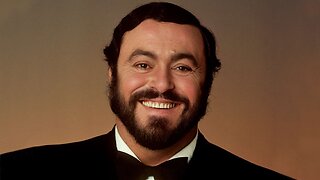 50:16
50:16
Adaneth - Arts & Literature
14 days agoLa Storia siamo Noi: Luciano Pavarotti (ENG SUB)
67 -
 2:18:53
2:18:53
Badlands Media
9 hours agoDevolution Power Hour Ep. 403: Brennan Exposed & The Intel War w/ Thomas Speciale
175K37 -
 1:06:09
1:06:09
Man in America
11 hours agoExposing HAARP's Diabolical Mind Control Tech w/ Leigh Dundas
51.4K31 -
 1:47:16
1:47:16
Tundra Tactical
7 hours ago $48.09 earnedGlock Interview From Beyond The Grave//Whats the Future of Home Training??
27.2K5 -
 2:16:35
2:16:35
BlackDiamondGunsandGear
5 hours agoEBT Apocalypse? / Snap Down SHTF / After Hours Armory
10.3K4 -
 14:05
14:05
Sideserf Cake Studio
17 hours ago $7.76 earnedHYPERREALISTIC HAND CAKE GLOW-UP (Old vs. New) 💅
38.4K6 -
 28:37
28:37
marcushouse
19 hours ago $4.02 earnedSpaceX Just Dropped the Biggest Starship Lander Update in Years! 🤯
15.3K5 -
 14:54
14:54
The Kevin Trudeau Show Limitless
3 days agoThe Hidden Force Running Your Life
88.4K17 -
 2:16:35
2:16:35
DLDAfterDark
6 hours ago $1.45 earnedIs The "SnapPocalypse" A Real Concern? Are You Prepared For SHTF? What Are Some Considerations?
14.5K7 -
 19:58
19:58
TampaAerialMedia
17 hours ago $2.77 earnedKEY LARGO - Florida Keys Part 1 - Snorkeling, Restaurants,
25K15
